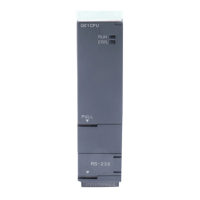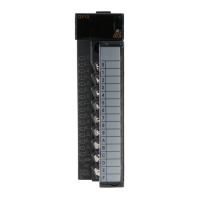3 - 86
3.9 Numeric Values which can be Used in Sequence Programs
3.9.4 Real numbers (Floating-point data)
3
SEQUENCE PROGRAM CONFIGURATION AND
EXECUTION CONDITIONS
3.9.4 Real numbers (Floating-point data)
Real number data includes the single-precision floating-point data and the
double-precision floating-point data.
The Universal model QCPU can use the double-precision floating-point data.
(1) Single-precision floating-point data
(a) Internal expression of real number data
The CPU module internal expression of received real number data is explained
below.
Real number data is expressed as shown below, using 2 word devices.
[Sign] 1.[Mantissa] 2
(exponent part)
The bit configuration of internal expression for the real number data is as follows:
1) Sign
The sign is expressed at b31 as follows.
0: Positive
1: Negative
2) Exponent part
The “n” of 2n is expressed by b23 to b30, depending on the BIN value in b23
to b30.
3) Mantissa:
For a binary number “1.XXXXXX.....”, the “XXXXXX.....” portion is expressed
by 23 bits (b0 to b22).
Figure 3.69 Bit configuration of real number data
Figure 3.70 Relation between value stored in exponent part and exponent
b31 b30
to
b23 b22
to
b16 b15
to
b0
b31
b22 to b0
Mantissa (23bit)
b23 to b30
Exponent part (8bit)
Sign
b30 to b23
n
FFH
Not used
FEH
127
FDH
126
00H
Not used
02H
-125
01
H
-126
81H
2
80
H
1
7FH
0
7E
H
-1

